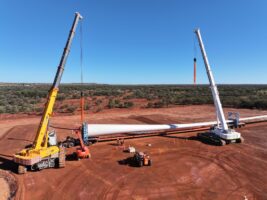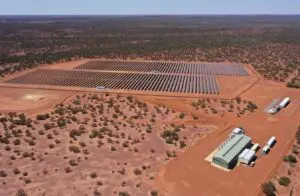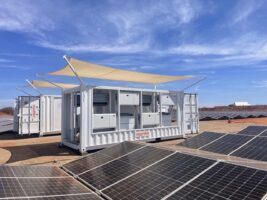Data centres are a black box of energy use, with no data available on just how much electricity the rapidly growing industry uses.
There is equally little information on how many data centres there are in Australia: Data Centre Map says there are 137 in the country, Cloudscene counts 304, and a now-deleted but much cited report Data Centres Guide to Sustainable Procurement suggested there might be as many as 50,000.
“As a class of electrical consumption it’s risen somewhat out of the blue, it’s grown massively over the last decade,” says Victoria Energy Policy Centre director Bruce Mountain.
“There are data hosting companies, which are separate to hosting companies, [and others such as] Amazon which has a variety of operations but also does data hosting. Separating data hosting from separately owned data entities is hard to do, but it’s desperately worthwhile doing, considering the growth in power usage.”
Estimating energy use by data centres is fraught with inaccuracy due to lack of information, to the point where a report by CSIRO wasn’t able to put a number on it in Australia.
While some companies, such as NextDC, report to the ASX their total installed capacity in megawatts, there is no obligation on companies such as Google or Microsoft to do the same nor report energy use.
A DC Byte report said Sydney had 1.7 gigawatts (GW) of installed, under construction and proposed data centre capacity in the March quarter, but didn’t mention any other Australian cities.
The rule-of-thumb-guesstimate often reported in the Australian media is that data centres eat about 4 per cent of generated electricity.
The International Energy Agency said in 2020 data centres globally used 1 per cent of energy produced and that figure hadn’t changed much in a decade.
Although it forecast the capacity of data centres to triple by 2020 energy use, it wasn’t expected to rise much more than 3 per cent thanks to energy efficiency gains from hardware efficiency, advancements in the management of cooling and heat dissipation, and more efficient use of computing.
“Sometimes efficiency increases will exceed growth in service demand, for example, in the case of Cogent, a major network provider that has tripled data traffic over the last four years while network energy use declined by 50 per cent,” wrote Jonathan Koomey in 2021, the globally recognised expert in figuring out data centre energy use.

As one of the few major energy consumers in Australia that isn’t monitored for its consumption, the risk of not knowing the sector’s energy use or how that might grow is a problem for policymakers trying to manage Australia’s energy transition.
“Even if the most optimistic estimates of energy sector impact by data centres are accepted, without accurate data it will be difficult to understand which of the scenarios has come true and at what point in the future any changes in the profile of data centre energy consumption will require policy interventions or other mediations,” CSIRO researchers Stephen Lindsay, Kate Cavanagh, Terijo Lovasz said in 2021.
The risk of not knowing is costly, says Koomey.
He says wild overestimations of energy use led to an excessive infrastructure build out in the US, which is proving costly both to maintain and in terms of power needed to run unused fibre.
However, the arrival of natural language processing models — ChatGPT and its ilk — is set to radically ramp up data, and therefore energy consumption again: semiconductor research firm SemiAnalysis estimated that ChatGPT alone requires 28,936 GPUs to run with a monthly electricity consumption, currently, in the millions of kilowatt hours.
Data centres the next batteries?
New data centres are increasingly using renewable energy sources, including in-house rooftop solar.
Mountain says the next logical step could be to colocate next to wind or solar farms whose generation in places such as Mildura, where generation is currently heavily curtailed due to a lack of capacity in the neighbouring grid.
“There are interesting things happening with data centres. In Texas some companies are putting them next to wind farms,” he says.
“It can operate almost like a battery as you can vary the electricity demand. It can’t recharge but you can vary the consumption based on surpluses on wind and solar.”
CSIRO says using data centres for grid services, such as operating as a virtual power plant or participating in demand response activities by leveraging centres’ backup power equipment, could be an option — if the Australian Energy Market Operator (AEMO) had the appropriate data.
“These combined characteristics provide opportunities for data centres to provide energy services to the grid, either by discharging at times of demand, or storing energy at times of oversupply,” the authors wrote.
“Interviewees indicated that this was actively being pursued in Australia, however insufficient information was provided to the authors to understand the magnitude and maturity of this development in the Australian sector.”
These would necessarily be small scale batteries, however, given one of the biggest “hyperscale” data centres in Australia is a 28 megawatt (MW) SY9x facility in Sydney, while other operators like NEXTdc spread its 113.9 MW capacity over 11 centres.










